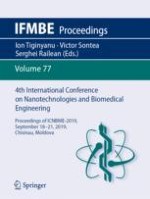2020 | OriginalPaper | Buchkapitel
Testing Green Silver Nanoparticles for Genotoxicity, Antioxidant and Anticancer Activity
verfasst von : M. Petrosyan, T. Gevorgyan, G. Kirakosyan, L. Ghulikyan, A. Hovhannisyan, N. Ayvazyan
Erschienen in: 4th International Conference on Nanotechnologies and Biomedical Engineering
Aktivieren Sie unsere intelligente Suche, um passende Fachinhalte oder Patente zu finden.
Wählen Sie Textabschnitte aus um mit Künstlicher Intelligenz passenden Patente zu finden. powered by
Markieren Sie Textabschnitte, um KI-gestützt weitere passende Inhalte zu finden. powered by
